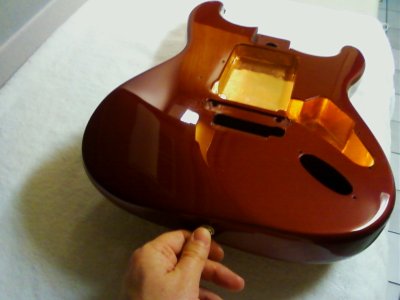Hey, something I know a little about! Using spray paint in cans!
I don't know about using the Minwax Poly over spray paint. If it's a water based poly, there should be no problem. If you plan to use a solvent-based poly, I would try the spray paint on a scrap piece of wood first, let it dry completely, then apply the poly. Let it dry and see if there's a reaction or not.
When using spray paint there are some tips to help make a very nice final product. Assuming you are painting a solid color and desire a glossy final finish, you may need to fill the grain of the wood first, spray a primer and wet sand it smooth. This may take several coats, depending on how well you filled and sanded. Your primer serves several functions: it fills, it reveals the flaws that require more filling, and it provides an even, slightly "toothy" surface for your color coats.
Assuming you now have a beautifully smooth and primered body. Let that primer get fully dry. Even dry-to-the-touch paint needs to fully outgas.
Your spraypaint works much better warm and in a low humidity environment. Don't paint when it's raining or humid. You're just asking for frustration. Shake those rattle cans for a full minute. When I paint, I will hold the can under hot running tap water for a few seconds, then shake the can, warm, shake, warm shake, until my arm gets tired. Get ALL of that paint shaken off the bottom of the can.
Your first coat or two should be light "mist" coats. Barely any color at all. This helps your "toothy" primer coats to grab the color coats. The old rule still holds: Many light coats are better than one or two heavy coats of paint.
When you're ready for your color coats, make sure you hold your can upright, and make even, slightly overlapping passes over the project. You will be able to watch the wet coat flow as you move the can. Make sure to maintain an equal distance from the project. Don't "arc" your passes, but make them even and smooth. Start your paint before you actually hit the project and continue each pass until you're clear of the body. Don't start spraying at the front of the project and stop at the end. This will cause more paint at the beginning and end nad not as much in the middle.
Let your wet coat dry and paint more. I turn my project so the paint goes on front to back, then side to side. Perpendicular coats ensure even color coverage.
Let that paint dry. Depending on relative humidity, it may take a week or two to fully outgas. Let it dry. Then a wet sanding with fine sandpaper will reveal all the "orangepeel" that your smooth paint really looks like. If you sand through to your primer layers, spray on some more color coats, let them dry and wet sand again. Let that dry and you're ready for your poly coats.
Apply those as recommended by the manufacturer.
As with any finish, the better your preparation and sanding, the better the finished product. Take your time and do the job right.
Can't wait to see pictures! Best of luck, mate!



